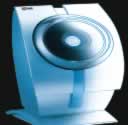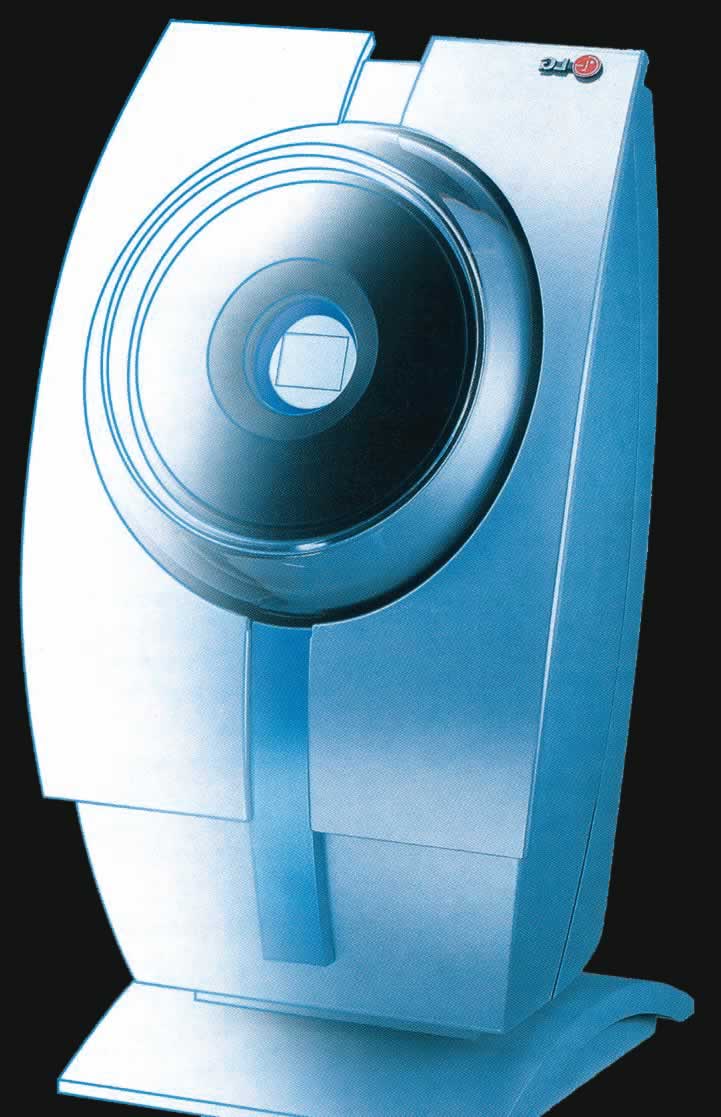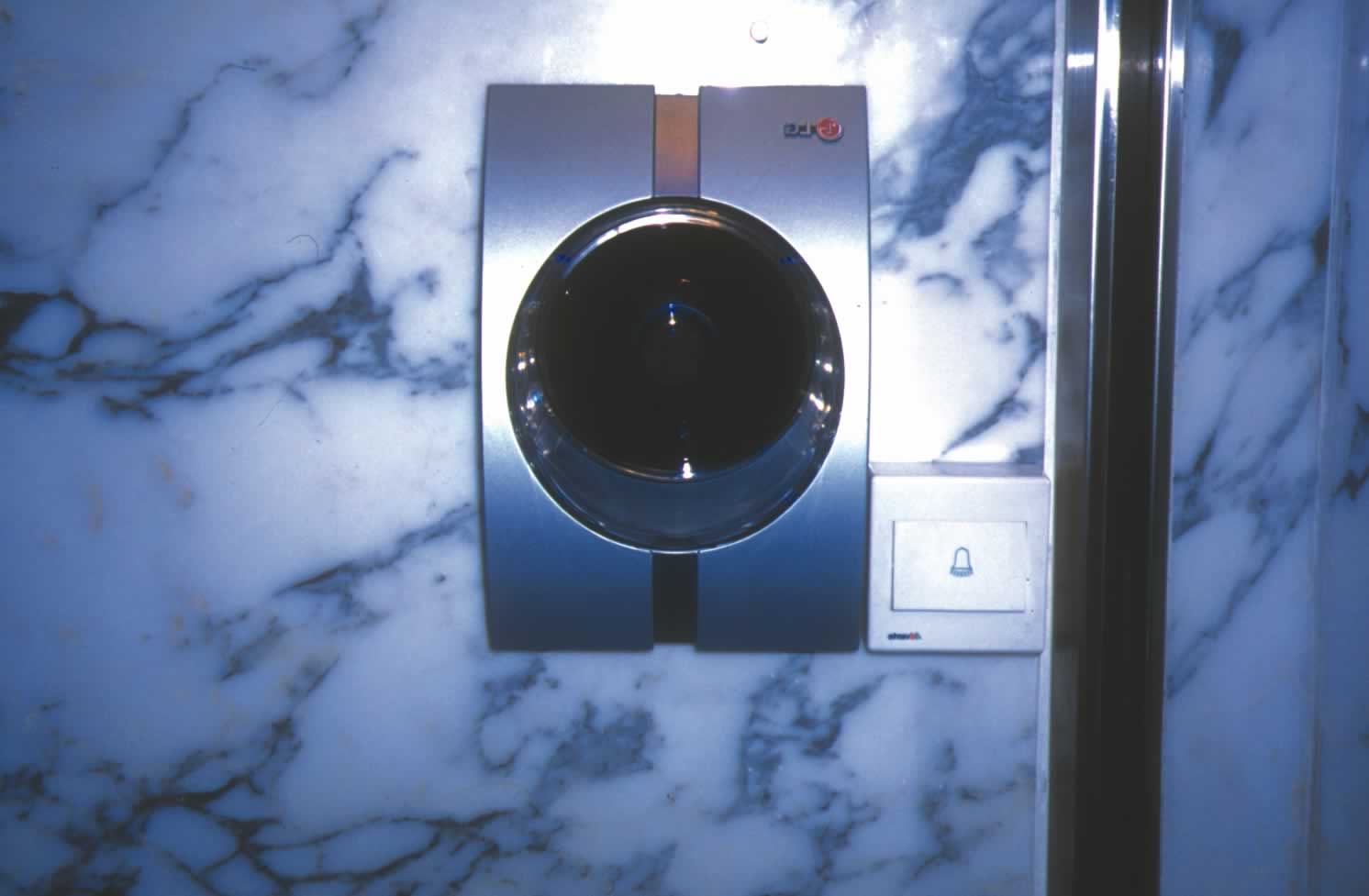BiometricsIris-scan ensures tighter security
By Jenny Chan
Iris-scan at a door offers the best security.
Many technology companies, foreseeing abundant potential for security applications, are now conducting research on iris-scan systems.
Iris-scan systems are a development of biometrics. Biometrics uses physiological or behavioral characteristics for identification. Iris recognition belongs to the identification branch of biometrics.
It was pioneered by Prof. John Daugman of Cambridge University. During its early experimental stages, all model samples were taken from Westerners.
As a result, problems arose when iris-scan technology was first applied to Asians.
“The first problem is Asians’ eyes are comparatively smaller than those of Westerners, thus making it difficult to capture the whole iris image,” said Prof. David Zhang Dapeng, the director of the Biometrics Research Centre at The Hong Kong Polytechnic University.
“The dark background of Asians’ irises also poses problems to image capturing.”
Fortunately, these problems have been solved with the advancement of new technology.
According to Kevin Wong, business manager of Golden Apple Biometrics Company, an iris recognition system contains four essential units.
The first one is an enrollment optical unit that captures users’ iris images at a distance of 6 to 10 inches during the registration process.
A computer then digitalizes the images into 512-byte iris codes. The templates are then stored in a computer database for future identification. In an identification process, a remote optical unit takes photos of users’ eyes. It takes only a few seconds.
Once the photos are taken, an identification control unit will match the image with the registered templates in the database.
“Biometrics are more reliable than current methods such as keys, personal identification numbers and passwords,” said Prof. Zhang.
“The old methods depend too much on one’s caution and memory. Passwords, for example, are easily forgotten or stolen; whereas physiological and behavioral characteristics are inerasable and unchangeable.”
Irises stop growing and their patterns stablize after people are about 8 years of age. Based on the unique texture of everyone’s iris, it is one of the most reliable and durable characteristics for identification.
The system’s reputation for having an exceptionally high accuracy rate is solid. In fact, the failure rate of capturing images and matching templates is nil. The effects of possible problems that may occur during the verification and identification process, , such as user head movements, are minimal.
Moreover, according to Prof. Daugman’s website, each iris image has 266 unique identification “spots”, while other biometrichnologies have only 30 to 60. This contributes to the accuracy of the process and to its immunity to fraud.
Among all advantages, most important is that the iris-scan is harmless to a user’s eyes.
“Capturing an iris image is like taking a photo of the eye,” said Mr. Wong. “The radiance level of the optical units meets American and the European eye safety standards.”
Though it has many advantages over the current methods, iris scaning still has its own shortcomings.
“Devices of low quality require users to take off their glasses or contact lenses for registration,” said Prof. Zhang.
“Also, strong lighting is necessary to capture a clear iris image. Some users cannot simply open their eyes under such strong light.”
According to Mr. Wong, problems also arise because users with poor eyesight might have problems positioning their eyes at the center of the optical units.
“People under the influence of alcohol and drugs are especially not suitable for iris scanning,” said Mr. Wong.
Another factor that hinders its prevalence is its price.
Mac McGolpin, chief executive officer of AsiaWebCo, a firm specializing in biometrics solutions and web applications development, estimated that a typical iris-scan registration unit for door-exit control costs about US$3,000.
Despite all this, the system does have a high potential because of its accuracy and versatility. The 9/11 terrorist attacks further stimulated the development of biometrics.
Under the Enhanced Border Security and Visa Reform Act, the American government requires visitors from the 28 countries in its visa-waiver program to have microchips embeded in their passports.
These microchips will contain biometric identifiers, one of which could possibly be iris imaging. Similar measures have also been adopted in Great Britain, Japan and Germany.
With such a promising future, the Hong Kong Government is also playing an active role in promoting the local application of the system.
A government-funded biometrics research center was set up by The Hong Kong Polytechnic University in 1988.
Apart from research, the Hong Kong Institute of Vocational Training started using an iris recognition system for educational purpose in April. Courses dealing with different biometric systems will be held next year.
The Information Technology Services Department also installed an iris recognition camera last year in its showroom, to promote its uses as a security device.
On 15 April, the Interger Hong Kong Pavilion, a grand exhibition featuring the latest technological innovation at Tamar site, introduced an advanced iris-recognition system for door-exit control.
Further facilitating the academic progress of biometrics, an International Conference on Biometric Authentication, chaired by Prof. Zhang, will be held in Hong Kong from 8 to 10 January 2004.
With such rising exposure and popularity, Mr. McGolpin predicted that the iris-scan program might be adopted at local ATMs within 3 to 5 years.
“Iris-scan technology may be applied to computer log-ins and on-line shopping,” he said.
“I think it will become more and more common in the coming years. One day we may just need to scan our irises when we travel by taxi. The bills will be automatically deducted from our bank accounts.”


